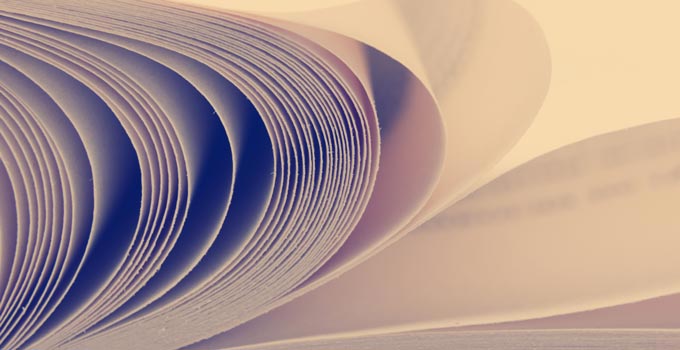How to choose book paper

Paper gives print books their unique character. It may be so subtle, we don’t even give it thought, but with every turn of the page, paper
influences what a book feels like in our hands. The feel of it under our fingers. Its weight, its color, and contrast against the ink.
If you’re using a print on demand (POD) service, you may be offered fairly limited options when it comes to choosing your paper. But for
those of you choosing between a wider range of paper samples, this article may help you decide.
Color
Your book’s paper can be any color you like, as long as that color is white. Colored paper in books is almost unheard of, but that doesn’t
mean there isn’t still a good bit of variation from cream to bright blue-white. A crisp blue-white paper communicates a no-nonsense, technical
feel. It is perfect for images, illustrations, small details and reproducing color faithfully on a page. Some readers also argue that the
contrast between black ink and bright white paper is better for their eyesight, and easier to focus on at a quick glance. Others then consider
off-white and cream tones to be easiest on the eye, especially when reading for long stretches at a time. These tones offer naturally reduced
glare and softer contrasts compared with pure white paper. They also have a slightly warmer, friendlier quality, and because of this, they’re
often the go-to choice for fiction.
Thickness
The thickness of the paper has a big effect on how the book feels. Thin, floppy paper can feel cheap and a little greasy under your fingers,
but thick paper, can be difficult and awkward to turn. The thickness will also impact the opacity or the show-through of text and images from
one side of paper to the other. Less of an issue with a novel but more important to consider for a full-color non-fiction text. We measure
paper thickness in microns or points but the book industry tends to focus more on the overall thickness of the printed book in pages per inch (PPI).
If you need to, you can convert from paper thickness in microns to book thickness in inches. So for a 500 page book
thickness = paper leaves x paper thickness = 250 leaves x 86 microns = 21500 microns = 21500 microns x 0.00003937 inches = 0.85 inches.
So the book block between the front and back covers is 0.85 inches.
Weight
Heavy papers make heavy books. This can be an issue for the person carrying and holding the book, but also for the publisher who needs to pay
more to ship and post it. We tend to express paper weight in pounds (#) per 500 sheets of that paper’s basic sheet size. Unfortunately,
‘basic sheet size’ is not the same for all types of paper, so this makes weight comparisons tricky. As a rough guide, thickly coated papers
might be something like 70#, standard papers around 50#, and mass market paperbacks are usually 35#. A more useful weight measurement might be
grams per square meter (gsm), which we sometimes refer to as ‘equivalent weight.’ Looking at gsm can give you a quick indication of different
papers’ relative heaviness, from a very light 70gsm to a very heavy 115gsm.
Finish
Finish refers to whether the paper is coated or left uncoated. This alters, amongst other things, a paper’s smoothness. A smoother surface
may feel more exclusive and cool with its sharp line and text reproduction. A polymer or clay mix is applied to paper to fill tiny gaps
between fibers, giving the surface a much smoother finish. The minerals used to coat the paper makes it feel cold to the touch but it can
give sharp outlines for both text and images as ink sits on top, rather than soaks in. A rougher surface, on the other hand, can add a
more tactile and natural character. Uncoated paper is a wood-fiber material that feels warm to the touch.
Source
It’s also important to consider how manufacturers will produce your paper. Is it new paper or recycled? New paper requires more energy and
produces more CO2 during manufacture than recycled paper. The paper industry has been responsible for large areas of deforestation over the
years so where there is a choice many people prefer not to contribute to the loss of yet more trees. POD saves paper, energy, pulping and
landfill by avoiding the need to destroy unsold books. There is no supply chain waste, no excess greenhouse emissions and no wasted natural
resources. All paper is sourced from fully FSC®, SFI®, or PEFC™ certified mills but it is a mix of these so it is not permissable to include
the logo or recycled paper statement in your book. However nothing comes from endangered old growth forests, forests of exceptional
conservation value, or the Amazon Basin.